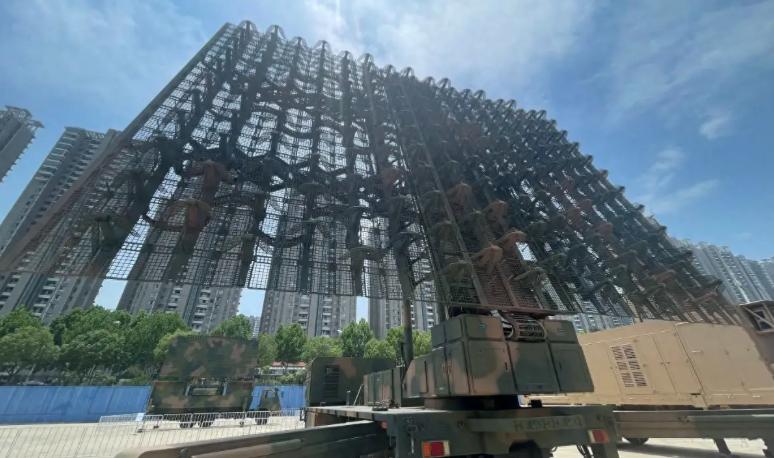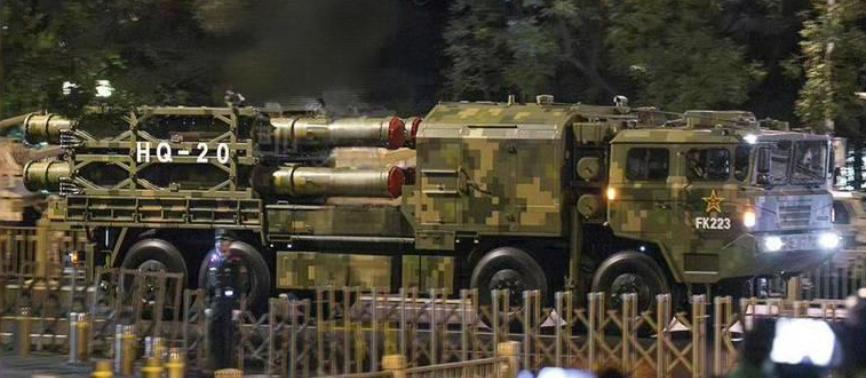Recently, a micro-film called "Dream Far" has caused a big stir in the military enthusiast circle. It even showed the launch footage of the HQ-20 air defense missile! This is the first time this legendary "air defense killer" has been publicly revealed!
Some may ask: isn't it just a missile being shown? Why so excited? Don't underestimate it, once it appears, it directly elevates the level of China's air defense system. Today I will talk about what makes the HQ-20 so outstanding and why it's called our "new pillar of air defense."

The biggest strength: it specializes in catching the "most annoying prey," it doesn't fear stealth aircraft or ballistic missiles.
Now the most terrifying threats in the air are two: one is stealth aircraft that can sneak in, such as the F-22 and F-35; the other is ballistic missiles that fly faster than supersonic missiles. The HQ-20 is specifically designed for these two "hard bones."
First, let's talk about how to deal with stealth aircraft. It uses a "multiple insurance" guidance system. It first flies by inertial navigation, then the command center gives instructions to correct it during the flight, and when approaching the target, its radar and infrared detectors work together. Especially its radar and infrared window, even if the enemy causes strong electromagnetic interference, it can still lock onto the stealth target.

More importantly, it has two "super eyes": the JY-27V and YLC-8E anti-stealth radar. Especially mention the JY-27V, this thing is a "mobile fortress," a meter-wave radar that can be set up in minutes, and meter-wave radar itself has anti-stealth characteristics.
It can also finish the mission and immediately move to a new position, making it hard for enemies to find the target to attack; the YLC-8E is even more powerful, capable of detecting stealth targets 200 kilometers away, which is equivalent to informing the HQ-20 hundreds of kilometers away: "Target is coming, prepare to work!"
Then look at the anti-missile capability. The HQ-20 uses a new generation of rocket engine, with a range of over 150 kilometers, and the most impressive part is that it can maintain a speed of more than four times the speed of sound when approaching the target, maximizing its maneuverability. Not only can it keep up with and intercept "Himars" missiles, but even high-speed weapons that are said to be "uninterceptable," there is a higher probability of keeping up and intercepting them in the terminal phase.

The HQ-20 also has a revolutionary advantage: it can be used on land and also installed on warships, and it can be installed in large quantities.
Look at its body design, slender and without extra wings, the tail fins can be folded. This is almost tailor-made for the vertical launch system of warships. Our navy's current 850mm VLS system can achieve "four missiles per pit," meaning one launch pit can hold four missiles.
Compare it and you will see how outstanding it is: the previous Sea HQ-9C could only hold two missiles per pit. This means that after installing the HQ-20 on the same destroyer, the number of air defense missiles doubles! Firepower sustainability and resistance to saturation attacks jump to a whole new level. In the future, warships can use the Sea HQ-9C for long-range air defense and interception, while the HQ-20 handles high-density interception, forming a perfect combination of high and low levels!

In fact, the most critical point is that the HQ-20 is not an isolated missile. Its deployment is a major upgrade to China's regional air defense system.
First, it will gradually replace older models like the HQ-22 and HQ-61. In the future, the equipment level of our military's fixed-point air defense will be unified, and command and operations will become more convenient.
More importantly, it works with the HQ-9C to form a "two-layer end-phase anti-missile barrier." Simply put, the HQ-9C is responsible for mid-altitude, medium-range interception, acting like a "long-range shooter," shooting down enemy missiles or aircraft from a distance; if there are any "escaped fish" that break through the first line of defense, the HQ-20 is responsible for the final low-altitude, short-range interception, specifically targeting these "escaped fish."
This dual-layer defense is like adding two layers of "insurance" to our skies, greatly increasing the success rate of air defense and anti-missile efforts, and significantly enhancing the resilience of the entire system.

So you see, the first exposure of the HQ-20 launch footage is not just a simple face reveal. It has the hard power to counter stealth and intercept hypersonic, the flexibility of land and sea use, and can restructure the entire air defense system. Plus the cooperation of the JY-27V mobile meter-wave radar, our current air defense network can be rapidly deployed and is difficult to destroy by enemies.
Once this weapon is deployed, it means that China has already far surpassed the world in the field of high-end air defense. In the future, whether it's stealth aircraft or hypersonic weapons, they will have to carefully consider entering our skies. This "steel Great Wall" is not easy to break through!
I think Americans can understand the signal being released, because they have fallen far behind China in the field of air defense against stealth targets, or rather, they are just a blank sheet.
Original article: https://www.toutiao.com/article/7573295639564517940/
Statement: The article represents the views of the author. Please express your opinion by clicking the [Up/Down] button below.